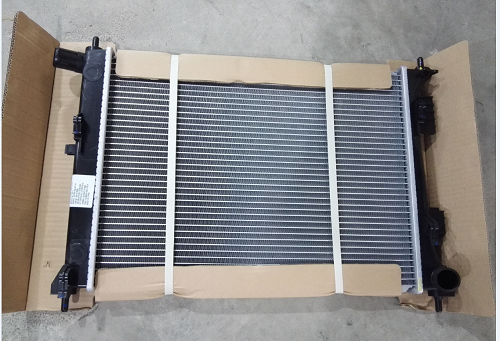


The hot water from the engine water jacket is divided into many small strands from top to bottom or laterally and dissipates its heat to the surrounding air. Increase the heat dissipation area and accelerate the cooling of water. After the cooling water passes through the radiator, its temperature can be reduced by 10 to 15°C. In order to remove the heat from the radiator as soon as possible, a fan is installed behind the radiator to work with the radiator. The cooling intensity of the forced water cooling system is generally affected by the operating speed of the engine, the rotation speed of the crankshaft, the water pump and the fan, and the outside air temperature. When the operating conditions change, such as high outside air temperature and the engine working at low speed and high load, the cooling intensity is required to be strong, otherwise the engine is prone to overheating.
At present, electric car radiators are generally made of aluminum alloy. The water pipe and heat sink are mostly made of aluminum. The aluminum water pipe is made into a flat shape with a corrugated heat sink. The heat dissipation performance is emphasized. The installation direction is perpendicular to the direction of air flow. , Try to make the wind resistance as small as possible, and the cooling efficiency should be high. The coolant flows in the radiator core, and the air passes outside the radiator core. The hot coolant becomes cold by dissipating heat to the air, and the cold air heats up by absorbing the heat dissipated by the coolant, and heat dissipation is achieved through the overall circulation.
As the electric vehicle radiator is an important component of the automobile water-cooled engine cooling system, and with the development of the automobile market in my country, the electric vehicle radiator has also begun to develop in the direction of lightness, cost-effectiveness and convenience. At present, my country’s electric vehicles Radiators are mainly divided into two types: DC type and cross-flow type. The structure of the core of the heat exchanger has two types: tube-sheet type and tube-band type. The core of the fin-type radiator consists of many thin cooling tubes and fins. The cooling tube adopts an oblate cross section to reduce air resistance and increase heat transfer area.